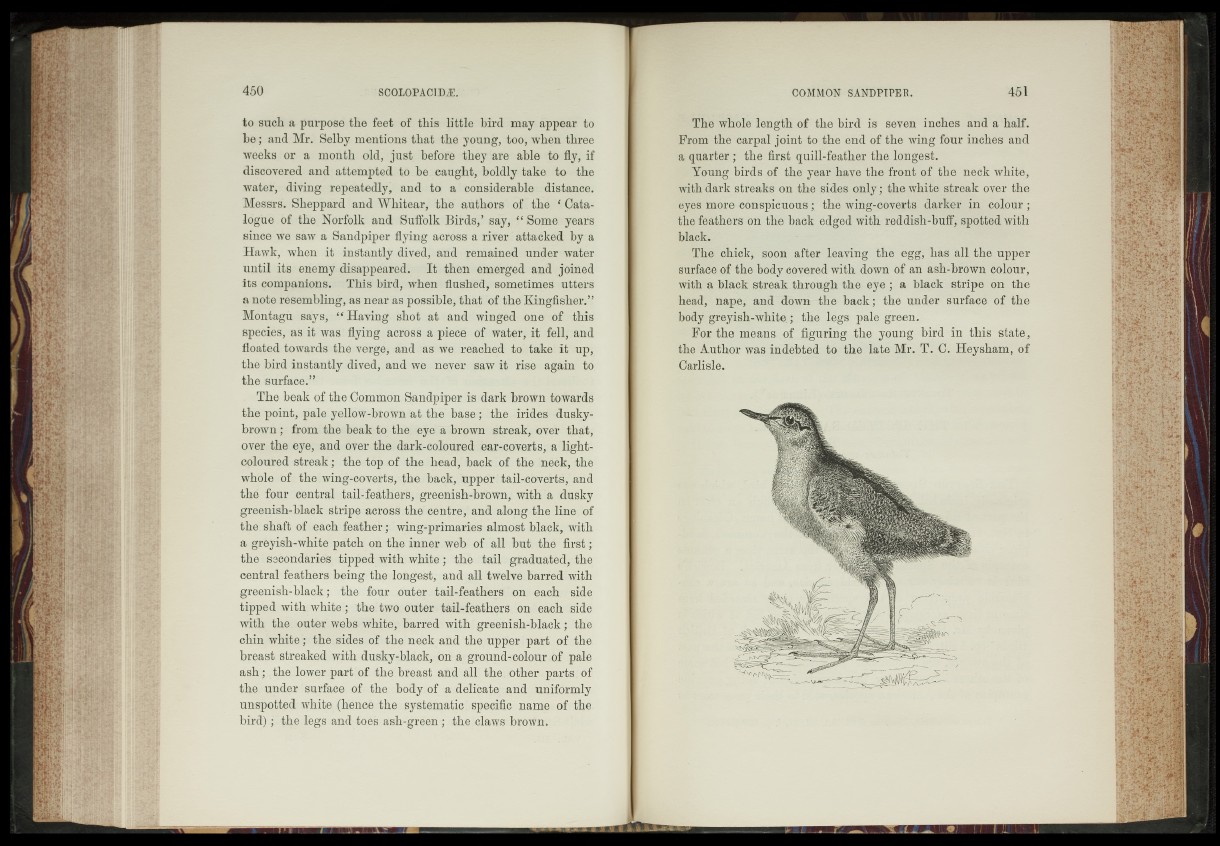
to such a purpose the feet of this little bird may appear to
be ; and Mr. Selby mentions that the young, too, when three
weeks or a month; old, just before they are able to fly, if
discovered and attempted to be caught, boldly take to the
water, diving repeatedly, and to a considerable .. distance.
Messrs. Sheppard and Wbitear, the authors of thé ‘ Catalogue
óf the Norfolk and Suffolk Birds,’ say, “ Some year's
since we saw a Sandpiper flying across a river- attacked by a
Hawk, when it instantly dived, and remained under water
until its enemy disappeared. It then emerged and joined
its companions. This bird, when flushed, sometimes utters
a note resembling, as near as possible, that of the'Kingfisher.”
Montagu says, “ Having, shot at and winged one of this
species, as it was flying across a pieed of water, it fell, and
floated towards the verge* and as we reached to take it up,
the bird instantly dived, and we -never saw it rise again to
the surface.”
The beak of the Common Sandpiper is dark brown towards
the point, pale yellow-brown a t ^ ^ b a s e ; the irides dusky-
brown ; from the beak to the. eye'a brown streak, over that,
over the eye, and óver the dark-coloured eari-coverts, a light-
coloured streak; the top of the head, back of the nëck, the
whole of theiwing-coverts,‘the^'ibaqk, upper tail-coverts, and
thé four central tail-feathers, greepish-brown, with a dusky
greenish-black stripe across the centre, and alongthedine, iof
the. shaft of each featherwing-primaries almost black, with
a greyish-white patch omthe inner web'of all but; the first;
the secondaries tipped with white; the tail graduated,;- the
central feathers-being’ the longest, and all twelve, barred with
groenish-black; the fopr .outerstail-feathers on each side
tippediwith white.; the.two outer tail-feathers on.eachilide,
with the. outer webs white, barred with' greenish-black ;,vtthe.
chin white; the sides of the neck and the upper part of the
breast streaked with dusky-black,-bn- a ground-colour, öf pale
ash; the lower part of thé?breast and all' the. other parts of
the under surface of the- body of a delicate and uniformly
unspotted white, (hence the systematici- specific name of the,
bird) ; the legs and foea ash-grëen; theédaws brown.
The whole length of the bird is seven inches and a half.
From the carpal joint to the end of the wing four inehes and
a quarter; the first quill-feather the. longest.
Young birds of the year have the front of the neck white,
with dark streaks on the sides only; the white streak over the
eyes more conspicuous; thé wing-coverts, darker in colour;
the feathers on the back edged with reddish-buff, spotted with
black.
The chick,, soon after leaving the egg, has all the upper
surface of the body covered with down of an ash-brown colour,
with a black streak through the eye ; a black stripe On the
head, nape, and down the back; the under surfacé of the
body greyish-white ; the legs pale green.
For the means of lfiguring the young bird in this state?,
the Author was indebted to the late Mr. T. C. Hey sham, of
Carlisle.